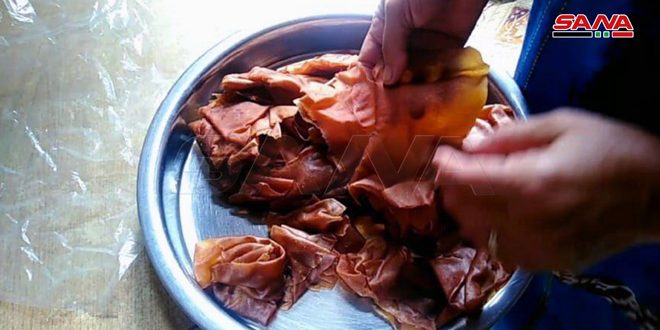Syrian towns and regions are often famous for the cultivation of a specific crop, therefore, making Malban in Homs is one of them, the specifically, in the village of Al Mutadarad in the western countryside of Homs, it is the most unique in Syria.
Malban traditionally comes from the grapevines of Al Mutadarad village that is famous for making this type of handicraft.
Thickened with starch and flavored with rosewater, it is mainly used to make traditional Arabic sweets that have been around for many centuries.
After the grape is squeezed and filtered, it is placed in a large pot for boiling on the fire for ten minutes. Then the grape juice is again filtered with another pot, then the juice is placed on the fire and semolina is added. Continuous stirring is required until it becomes coherent, then add pine or anise, serve it with nuts and almonds and pack it in boxes for hospitality.
 For many generations, it was the primary source of sugar. It is used as a sugar substitute in drinks and sweets.
For many generations, it was the primary source of sugar. It is used as a sugar substitute in drinks and sweets.
Malban is the favorite dessert for the families of Homs countryside in the winter because it contains the calories and vitamins that provide the body with the necessary energy, a product free of preservatives and dyes that are harmful to the body.
Grape Vineyards in Al Mutadarad village are covering large area of land, forming an economic source of income for the families there. This year, the high price of grapes and the materials used in the making of Malban has increased its price.
What also adds to the significance of this handicraft is that it has given the opportunity to many of women to start their own projects of producing grape by-products. These projects are characterized by their economic feasibility, and they constitute a source of good income for these women. Some of these by-products include juice, jam, molasses, raisons, and malban.
These handicrafts have a special flavor and taste that carry the scent of the earth, nature and trees so it always remains the best.
Lara Khouli


